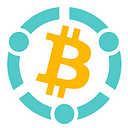ViaBTC Introduction | What Is A Blockchain Explorer? What Is Its Use?
When it comes to explorers, the first coming to mind must be Internet explorers such as Baidu and Google. If we compare Baidu and Google to a window into the Internet, the blockchain explorer is a visual window into the blockchain as well as an important infrastructure for the industry. In this article, we’re going to discuss what is a blockchain explorer and what it is used for.
The concept of blockchain has been a hot topic for the past two years, which is a new application case of computer technology such as distributed data storage, peer-to-peer transmission, consensus mechanism, and encryption algorithm. A blockchain explorer is needed for blockchain to be independent of any centralized managers for recording data while making the data records completely public and transparent. It is essentially a website where we can query blockchain-related information such as the block hash, the number of addresses holding coins, the number of active addresses, and the current block height. Or, using the wallet address or transaction ID, we may check the balance of a wallet or details of a transaction, for example, how much gas a transfer costs and how long it takes before the coins transferred can be credited to an account.
At present, many blockchain explorers, e.g. Blockchair.com, BTC.com, and Tokenview.com, allow users to query the information of multiple cryptocurrencies. Here we take BTC.com to demonstrate the process. After entering the URL, we will see details of mainstream coins such as BTC, ETH, and BCH. Take BTC for example.
We can see many details about BTC, such as the current price, circulation, hashrates of the entire network, difficulty, and transaction fees. On the right side are the global hashrate rankings of BTC mining pools in real-time, which reveal indicators such as the real-time hashrate and 7-day lucky value of each mining pool.
On the left we can see the current block height, the broadcaster, block generation time, and block rewards; on the right are the latest transaction hash and the transaction amount. After clicking on its address, we can see information including the balance of this address, the total amounts of BTC received and sent, and the number of transactions executed, a vivid example of how visually clear a blockchain explorer can be.
Still, some users may be strangers to the common blockchain terms aforementioned. Don’t worry. Now we’re going to dig into these terms.
Block hash
The block hash is a number obtained by performing double hashing on the block header. It is one of the block identifiers, which can uniquely and clearly identify a block.
Block height
The block height refers to the number of Bitcoin blocks mined since the genesis block. Though it is one of the block identifiers, it cannot identify a single block. Two or more blocks may have the same block height and thus occupy the same position in the blockchain.
Block size
The size of each block is not a fixed value, but depends on the number of transactions, with the cap at 2M.
Transaction fee
The transaction fee is the fee paid for a transfer. It is determined by the number of bytes occupied by the transaction, not the transfer amount.
Lucky value
The lucky value refers to the ratio of the actual block reward to the expected block reward. As mining pools account for different proportions of the hashrates across the network, blocks generated in a short period deviate from the theoretical value.
Mining difficulty
Mining difficulty measures the average number of computations required to mine a block and tells how long it takes to mine a certain number of blocks at a certain level of difficulty.
After reading this article, you must have gained some knowledge about blockchain explorer. Why not try them out and check some crypto information now?
For more about the blockchain industry, you can google ViaBTC. A vast sea of information is awaiting you!
